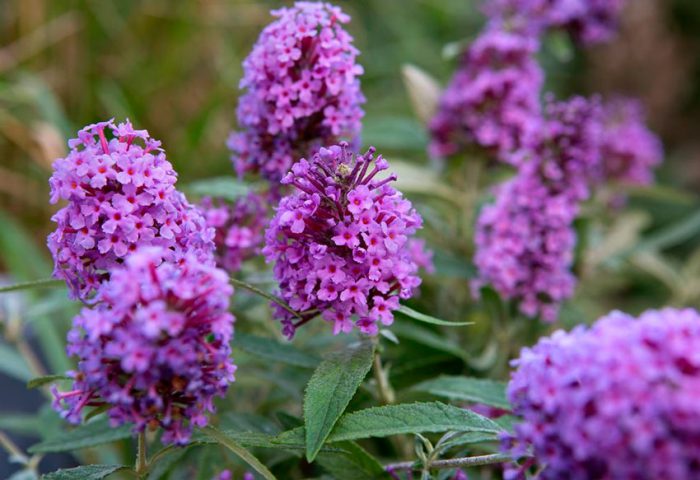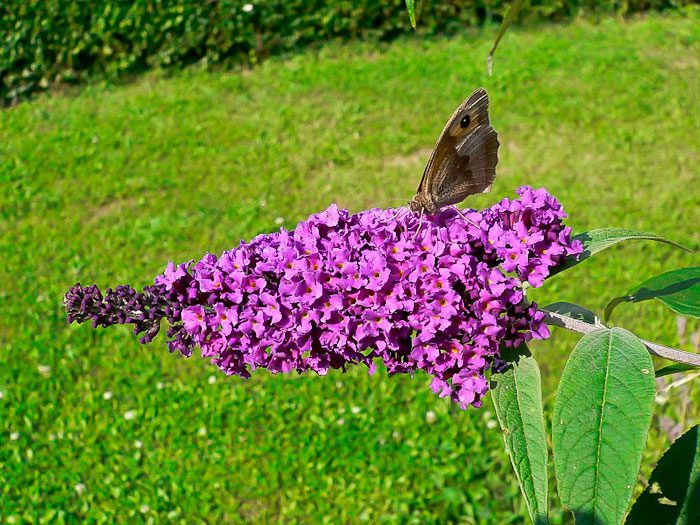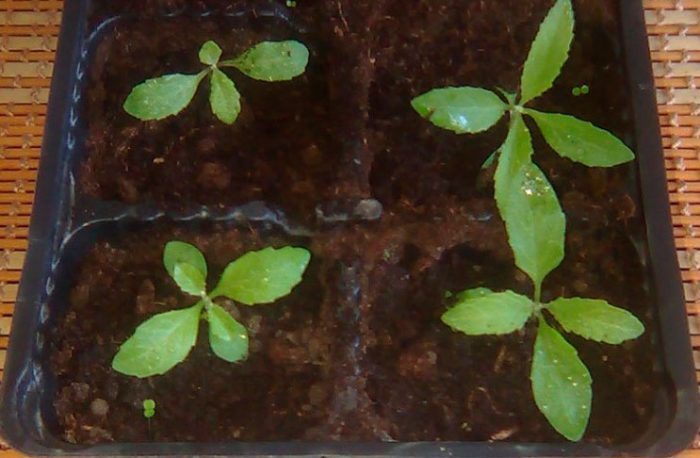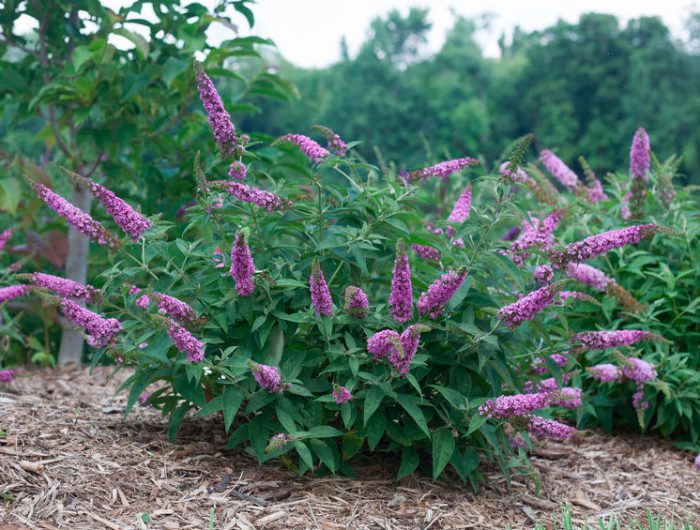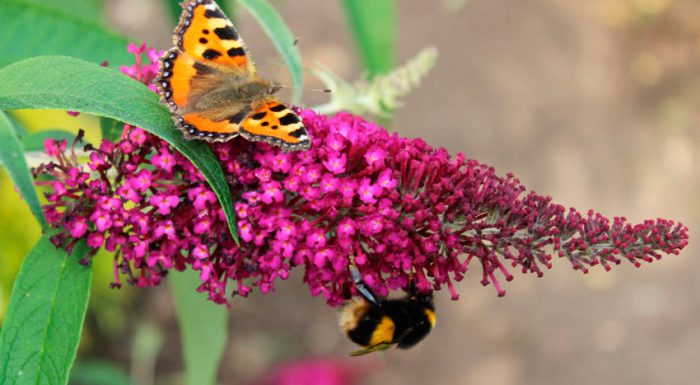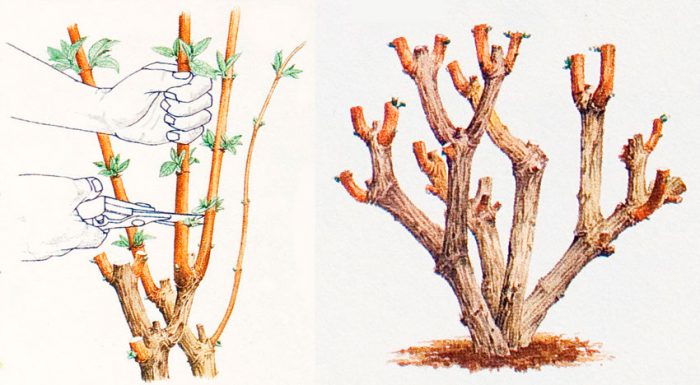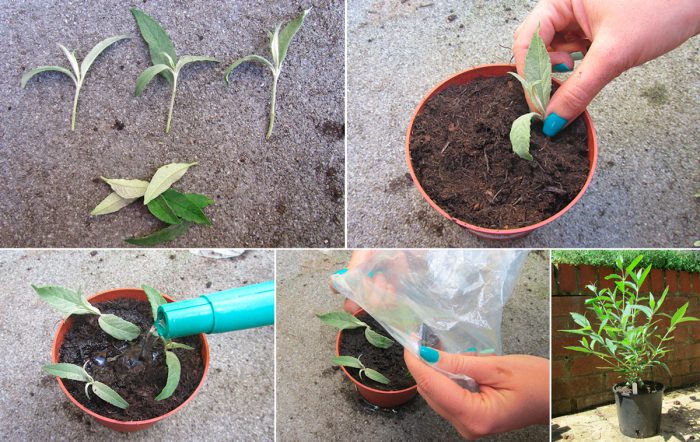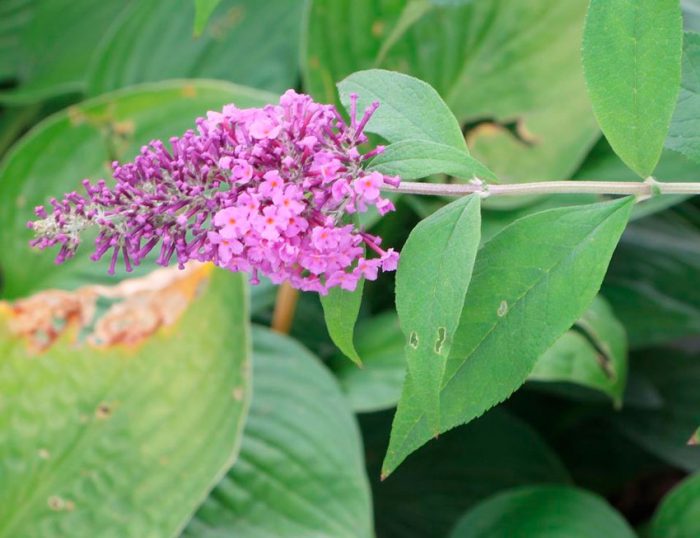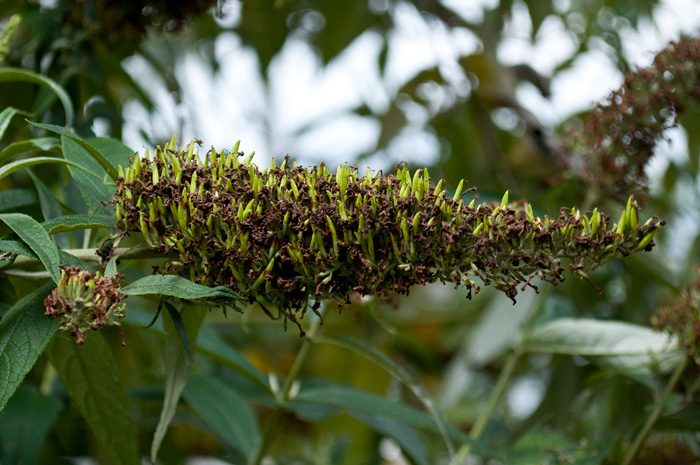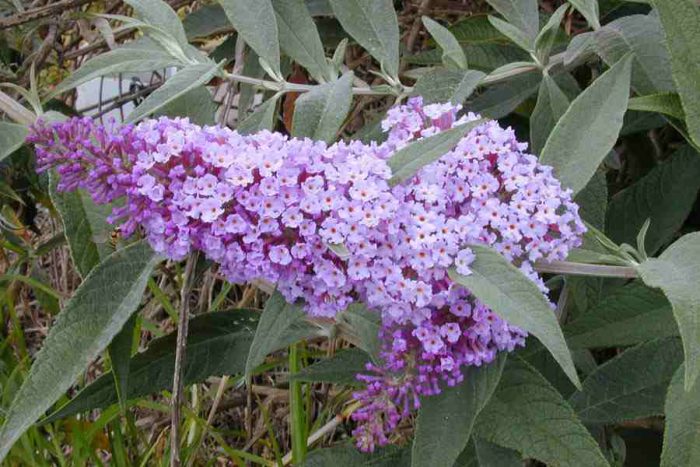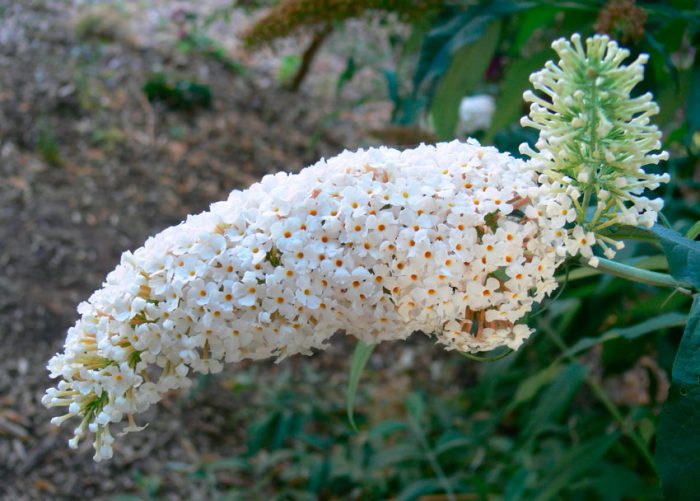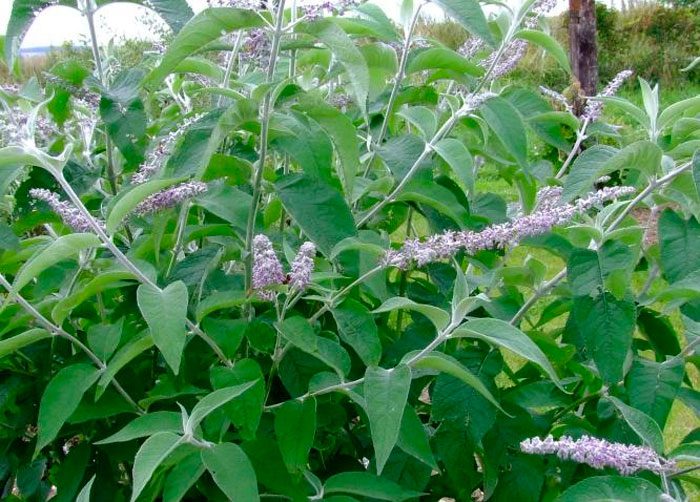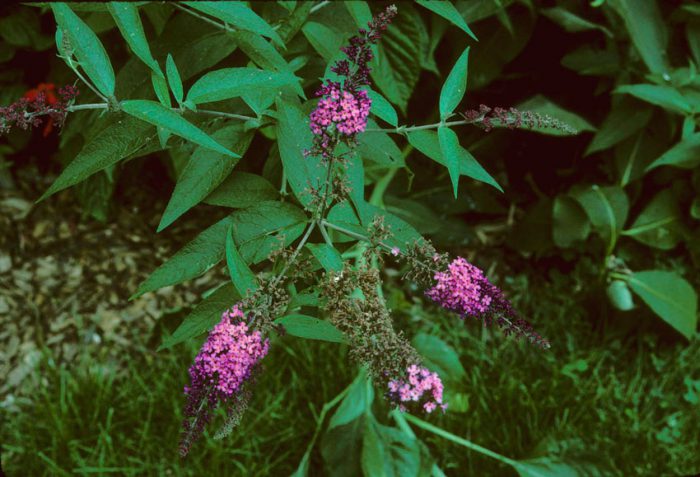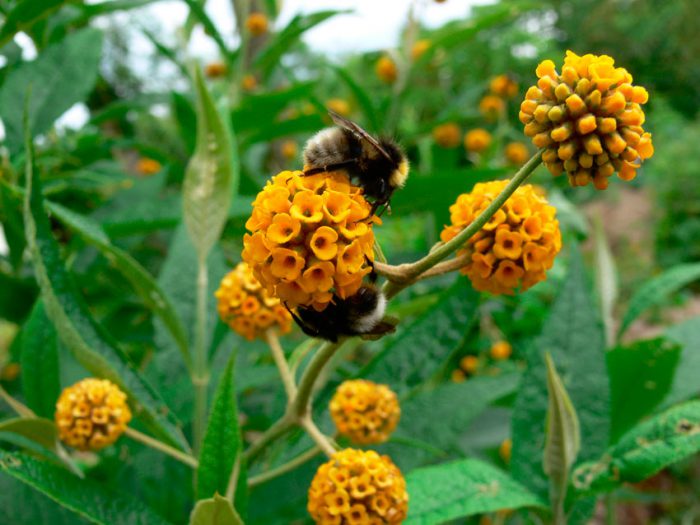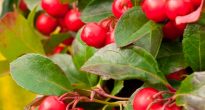Buddleja shrub (Buddleja) is also called buddleya, it is directly related to the Norich family. Under natural conditions, it can be found in temperate as well as warm regions of Asia, South Africa and America. This shrub was named after the Englishman A. Buddle, who was a botanist of the late 17th and early 18th centuries. In his homeland, this plant was called orange-eyed. Budleia is also called "moth tree" or "butterfly magnet". And all because the flowers of such a shrub have a strong honey smell, due to which large, very spectacular butterflies flock to pollinate them. During flowering, the twigs of this plant are very similar to lilac, in this regard, it is also called "autumn lilac".
Content
Budley features
In nature, there are a large number of species of buddlei, or rather, about 100. This genus is represented by deciduous or semi-evergreen shrubs and herbaceous plants. They bloom late and long enough. The peculiarity of the budley is that during the flowering period, flowers, buds and fruits are simultaneously present on its branches.
The height of the bush can vary from 150 to 300 centimeters. In most species, paired leaf plates have a lanceolate shape, which can reach 1-30 centimeters in length. In Asian species, panicle inflorescences can be 10 to 50 centimeters long. And American species have spherical inflorescences. Small tubular flowers are very smelling melliferous, they are divided into 4 lobes, like lilac flowers. They can be painted in a variety of color shades: red, yellow, lilac, white, pink, orange, crimson. In this case, the intensity of the color of the flowers may vary. The fruits are represented by oblong boxes with seeds inside. Cultivated species and varieties are frost-resistant, but if the plants are not covered, then in the winter with little snow they can freeze out. However, only that part of the plant that is above the ground will die, and in spring a large number of young growth will appear from the ground, in the same year it may begin to bloom. There are species that have high frost resistance, they are not afraid of frosts down to minus 20 degrees.
Growing budley from seeds
In middle latitudes, budley seeds on a bush most often do not ripen, but you can resort to such tricks as stratification or sowing on a snow layer. Experts advise purchasing the seeds of this plant in a specialized store, and it is best to choose foreign producers. The seeds of buddleya are very small, in order to make it easier to sow, it is recommended to combine them with sand. Fill wide bowls with neutral soil. There should be drainage holes at the bottom of the container, also make sure to make a good drainage layer. Sow the seeds onto the surface of the substrate and press down lightly (do not burrow). Water the crops with a spray bottle and cover the container with glass or plastic. The dish must be removed to a warm place with an air temperature of 22 to 25 degrees, it must be well lit and protected from direct sunlight. Sowing should be done at the beginning of the spring period. The first seedlings will appear after 7-14 days. The plant must be systematically ventilated and watered. In order to avoid the development of the "black leg", it is necessary from time to time for watering to use a solution of manganese potassium pinkish color.
Budley seedlings
After the young plants grow up, the shelter can be removed. After the appearance of 2-3 pairs of real leaves, the budley should be transplanted into individual containers, and it is better if these are peat pots. After that, the seedlings need to be hardened in the fresh air, for this you should open the window for a short time, but there should be no draft.


Watch this video on YouTube
Landing budley
What time to plant
The buddleya should be planted only after the threat of frost has passed. An area suitable for planting should be well lit and protected from strong gusts of wind, as well as from drafts. The soil should be neutral, well-drained, moisturized, rich in nutrients.
How to plant a budley
When disembarking, it should be borne in mind that the buddlea bushes grow strongly, so a decent distance must be left between them, otherwise they will be very cramped. The landing hole should be 40x40 centimeters in size. The depth of the hole should be equal to the size of the root system plus 20 centimeters. At the bottom of the hole, a drainage layer should be made, and fertilizer should also be added. The height of the drainage layer should be between 10 and 15 centimeters. To create it, you should use the material of a large fraction. A handful of garden soil is poured on top of this layer, which should be mixed with the same amount of compost and mineral fertilizer. Then, on this mound, you need to put a seedling and straighten its roots. Pour the required amount of soil into the hole, after which it must be compacted. Then the plant is watered, and the surface of the soil is covered with a layer of mulch (compost). Please note that when planting, the root collar is flush with the ground surface.
Care features
Watering this shrub should be carried out only during the dry hot period. For 1 bush, 10 liters of well-settled tepid water is taken. The water is poured into a groove that should be made around the plant. Budleya is a fast-growing plant, its stems can grow up to 200-250 centimeters per season. In order to achieve abundant, long-lasting flowering, it is necessary to make 2-3 fertilizing per season with fertilizer, which includes phosphorus and potassium, which accelerate growth and improve flowering. They also contribute to the fact that the size of the inflorescences becomes larger. And the shrub can be fertilized with organic matter (liquid compost and humus). It is recommended to alternate fertilizing with mineral and organic fertilizers. Also, this plant needs regular loosening of the soil surface, which must be carried out at a shallow depth and very carefully, since the root system lies close to the soil surface.And you also need to systematically weed.
Cropping budley
Trimming the buddleya is necessary. The fact is that if it is not carried out, then the stems become elongated and bare, as a result of which the bush loses its effectiveness and looks sloppy. Also, pruning helps the flowering become more abundant. Those inflorescences that have begun to fade must be cut off, since buddhie needs a lot of strength to grow new flowers. In spring, after the heat is established on the street, the bushes will need to be cut off, so tall varieties are cut to a level of 90 centimeters from the ground surface, and undersized ones - up to 30 centimeters. As a result, the plant will have an attractive appearance, and its flowering will become even more lush and spectacular.
Reproduction of budley
How to propagate budley seeds is described in great detail above. Also, such a shrub is often propagated by cuttings. In the autumn, after flowering ends, it is necessary to cut the cuttings, choosing for this annual shoots, which can be lignified or green. Then they are removed to a cool room that should not freeze through, the cuttings will be there until spring. It will be possible to plant them in the ground for rooting only next spring. If desired, cuttings can be planted in the ground for rooting in the fall, while their roots will grow back in a couple of months. When pruning, you need to ensure that at least three buds are present on the cuttings, while two of them should be covered with earth during planting. Rooted cuttings must be covered so that they do not die from winter frosts, and in spring they will need to be transplanted to a permanent place. Those cuttings that were stored until the onset of the spring period should be planted in open ground in a permanent place after the threat of frost has passed.
Pests and diseases
Only whiteflies and spider mites can settle on the buddlea, while they prefer hot, dry weather. In the event that you are unable to maintain the required air humidity, you will need to cut off the affected stems, and then treat the bush with an appropriate insecticidal agent. However, this plant is very resistant to diseases and pests, therefore, when grown in a garden, problems with it are extremely rare.
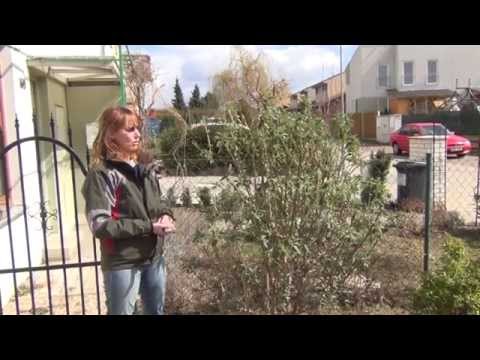

Watch this video on YouTube
After flowering
Seed collection
The seeds of this shrub must be harvested after they are fully ripe. As a rule, this time falls on September or October. However, those seeds that you collect yourself will need to be prepared for a long time before sowing, but this does not guarantee that they will sprout well. For this reason, experienced gardeners recommend buying buddlea seeds rather than harvesting them.
Wintering
After the leaf plates on the shrub begin to turn black, it will be necessary to huddle the bushes with dry soil to a great height (at least up to the height of the third bud on the stems). Then it will be necessary to cut off the branches, while it is necessary that only 20 centimeters rise above the mound. Then the bush needs to be covered with spruce branches, and a box made of wood should be installed on top of it. Lay roofing material on top of it and securely fix it with stones and bricks, so that the wind cannot destroy the resulting structure. Remember that film or sawdust cannot be used as a shelter, since, being under them, the plant may begin to rot. As for the box, its size should be as large as possible. The fact is that in this case, the plant will be provided with a large amount of air that it needs.


Watch this video on YouTube
The main types and varieties with photos and names
Several different species are cultivated in the middle latitude, and the most popular is the buddleja or David (Buddleja davidii).Derivatives of this type are also very popular, for example: Wilson buddley - lilac-pink inflorescences have a rich color, and they reach about 0.75 m in length, Vich buddley - she is taller, beautiful buddley - bright purple-pink inflorescences are very large and fluffy.
Buddleja davidii
The height of such a deciduous shrub can vary from 200 to 300 centimeters. And this plant may not be a very large tree (height 5 m), the ends of the branches of which drooping. The stems grow relatively quickly. The shape of the leaf plates is lanceolate-oval or lanceolate, with a sharpening at the apex. On the front side, they are dark green, and on the seamy side, they are yellowish-white with dense pubescence. The length of the leaves is about 25 centimeters. Fluffy spike-shaped inflorescences are composed of purple flowers that have a honey smell. The length of the inflorescences is about 40 centimeters. Flowering begins in the last summer days. Flowering duration is 6 weeks. Varieties:
- Alba, White Cloud and White Profusion - have white flowers;
- Empire Blue, Black Knight - flowers are painted in various shades of purple;
- Royal Red, Harlequin - flowers can be of various shades of red.
The species described below are less frost-resistant, but if they are well covered, they can survive the winter:
Budleja white-flowered (Buddleja albiflora)
This deciduous shrub has wide cone-shaped inflorescences, painted in light lilac or white.
Snow budley (Buddleja nivea)
On the surface of the stems and leaves of such a deciduous shrub, there is a dense tomentose pubescence. Paniculate inflorescences are colored lilac.
Japanese Buddleja (Buddleja japonica)
This deciduous shrub grows very quickly. The length of drooping panicle-shaped light purple inflorescences is about 20 centimeters.
Buddleja alternifolia (Buddleja alternifolia)
This deciduous shrub is drought tolerant. It is often grown in the form of a tree, with the crown being shaped like that of a weeping willow. The small inflorescences include lilac or lilac-pinkish flowers with an almond scent.
Budley spherical (Buddleja globosa)
This shrub is semi-evergreen. Blooming is observed in May. Spherical inflorescences are colored golden orange. Cultivated only in the southern regions.

